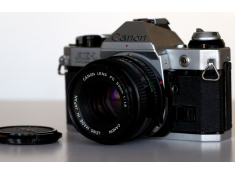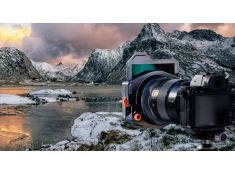Hard or Soft Graduated Neutral Density Filters: What’s the Difference?
Friday 06 December 2024
 1.4k
1.4k
 Reproduction without the author's authorization is prohibited
Reproduction without the author's authorization is prohibited
Graduated Neutral Density (GND) filters are essential tools for photographers aiming to balance exposure in high-contrast scenes, especially in landscapes. These filters reduce light intensity in specific areas of the frame, enabling better control over dynamic range. Understanding the different types of GND filters—hard, medium, and soft edge—is crucial to selecting the right one for a given shooting situation. This article explores the distinctions and applications of each type.
What is a GND Filter?
A Graduated Neutral Density filter features a gradient that transitions from dark to clear, designed to control the exposure difference between brighter and darker parts of a scene. This is particularly useful in situations like capturing a sunset or a backlit subject where the sky is significantly brighter than the foreground. Unlike a standard neutral density filter, the graduated design ensures the filter affects only part of the frame, preserving the dynamic range without compromising the overall balance.
GND filters come in various forms, but they all share a common goal: managing contrast effectively. The main distinction lies in the transition between the dark and clear areas of the filter.
Hard Graduated Neutral Density Filter
The hard GND filter has a sharply defined transition between the dark and clear sections. This makes it particularly suitable for scenes with distinct horizons, such as seascapes or deserts. The abrupt transition ensures precise control over light, allowing the photographer to perfectly align the darker part of the filter with the brighter sky while leaving the foreground unaffected.
When to Use a Hard GND Filter
Clear Horizons: When there is a sharp and well-defined horizon line, such as in open landscapes, hard GND filters ensure maximum control over exposure balance.
Architectural Photography: Hard transitions are also effective in scenes where the boundary between light and shadow is rigid, such as cityscapes with prominent buildings against the sky.
Sunrise and Sunset Shots: Capturing the intense brightness of the sun while retaining details in darker areas is another scenario where hard GND filters excel.
However, hard GND filters are less effective in irregular or complex scenes where the transition zone may cut through important elements of the composition.
Medium Graduated Neutral Density Filter
Medium GND filters feature a smoother transition compared to hard GND filters, making them a versatile option for various photographic scenarios. They are ideal for scenes with less defined boundaries between the sky and the foreground, where a hard edge might appear unnatural.
When to Use a Medium GND Filter
Mixed Horizons: Medium GND filters are well-suited for scenes with slightly irregular horizons, such as rolling hills or forested landscapes.
General Purpose: They are versatile enough to handle many types of scenes, offering a balance between precision and flexibility.
Dynamic Weather Conditions: When the lighting conditions are inconsistent due to moving clouds or diffused sunlight, medium GND filters provide smoother blending without abrupt changes.
Soft Graduated Neutral Density Filter
Soft GND filters have the gentlest transition between dark and clear areas, making them ideal for scenes where the transition from light to dark is gradual. They are most useful in situations where the horizon line is obscured or uneven.
When to Use a Soft GND Filter
Mountainous Landscapes: In scenes with jagged or irregular horizons, such as mountain ranges, a soft GND ensures a natural blending without harsh lines cutting through peaks or valleys.
Forest and Tree Lines: When capturing scenes with tall trees or uneven terrain, a soft GND allows the light to transition seamlessly.
Foggy or Hazy Conditions: Soft GND filters are excellent for subtle lighting situations, such as misty mornings, where the changes in brightness are not stark.
When Should I Use Hard, Medium, or Soft GND Filters?
Choosing between hard, medium, and soft GND filters depends on the composition, lighting conditions, and the subject of your photograph:
Hard GND: Use for clear and defined horizons or situations requiring precise control over a sharp boundary.
Medium GND: Choose for transitional horizons or when versatility is needed across varied landscapes.
Soft GND: Opt for scenes with irregular or gradual transitions, such as mountains, forests, or diffused light scenarios.
Understanding the strengths of each type of GND filter allows photographers to maximize the dynamic range in their images while maintaining a natural and balanced composition. Mastering these tools is an essential step for capturing high-quality, professional-grade photographs in challenging lighting conditions.
Statement: all contents and remarks made by K&F CONCEPT 's intranet friends only represent themselves and do not reflect any K&F CONCEPT 's opinions and views.
-
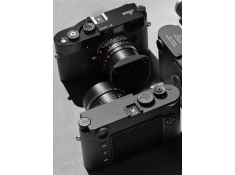 Leica M-mount Milestone! Leica M EV1 Camera SpecificationsWednesday 15 October 2025
Leica M-mount Milestone! Leica M EV1 Camera SpecificationsWednesday 15 October 2025 -
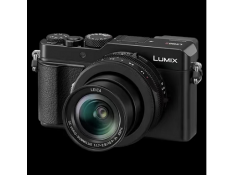 Panasonic to release the LX100M3 camera on October 17thTuesday 14 October 2025
Panasonic to release the LX100M3 camera on October 17thTuesday 14 October 2025 -
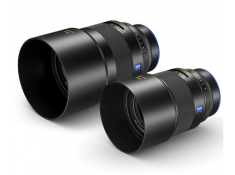 Zeiss is about to release a new Otus ML series lensMonday 13 October 2025
Zeiss is about to release a new Otus ML series lensMonday 13 October 2025 -
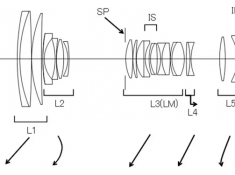 Canon Publishes Patents for 28-400mm F3.5-6.31S and 28-400mm F4-81S LensesMonday 13 October 2025
Canon Publishes Patents for 28-400mm F3.5-6.31S and 28-400mm F4-81S LensesMonday 13 October 2025 -
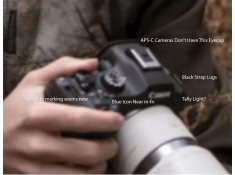 First spy photos of the Canon EOS R6 Mark III have been releasedFriday 10 October 2025
First spy photos of the Canon EOS R6 Mark III have been releasedFriday 10 October 2025




@2x-235x175.png)

